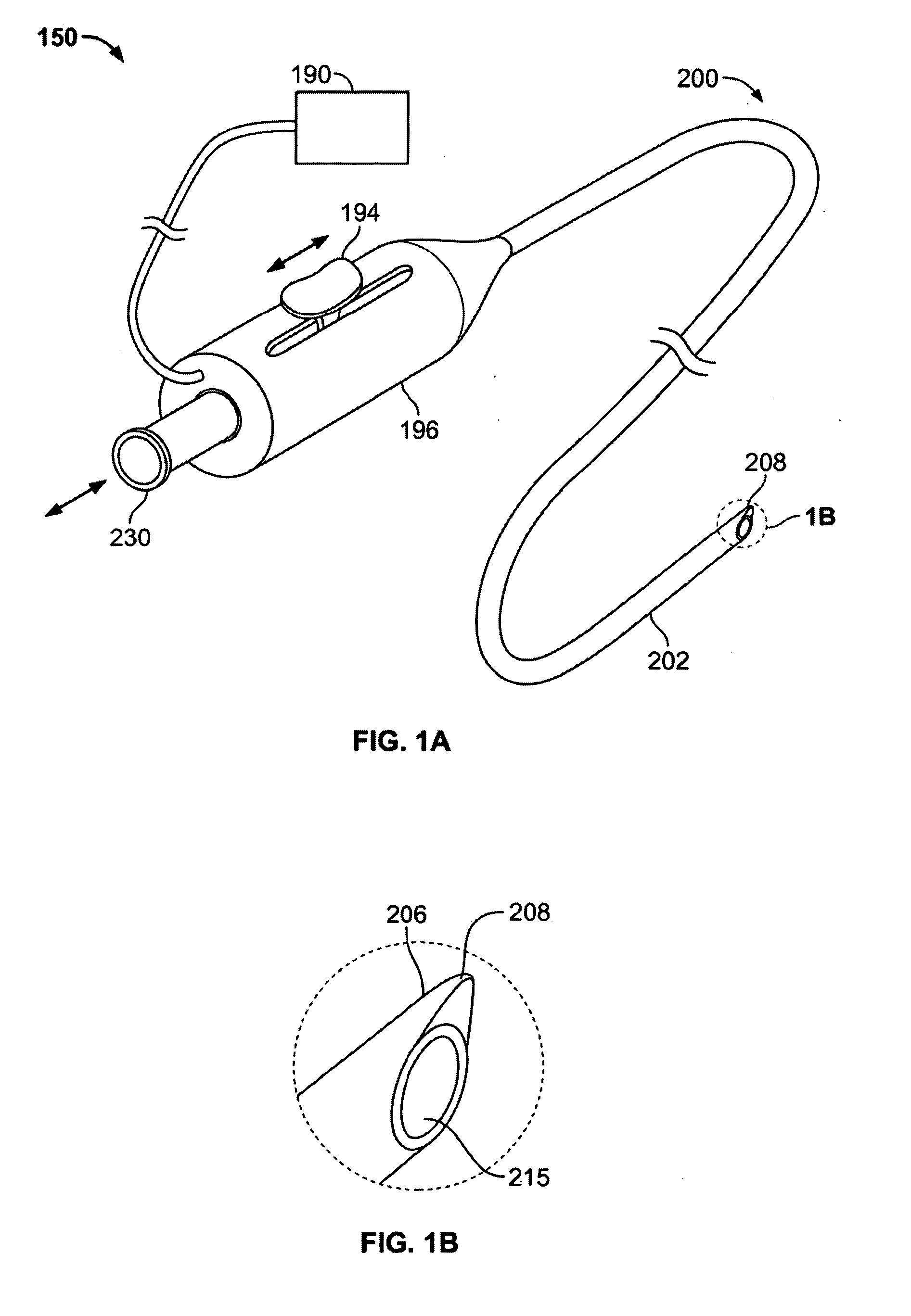Blood vessel sensing catheter having working lumen for medical appliances
a technology of working lumen and sensing catheter, which is applied in the direction of catheter, application, tomography, etc., can solve the problems of significant bleeding, escalating complications, and affecting the safety of patients in many types of scope-based procedures
- Summary
- Abstract
- Description
- Claims
- Application Information
AI Technical Summary
Benefits of technology
Problems solved by technology
Method used
Image
Examples
Embodiment Construction
[0023]FIG. 1A illustrates a view of a variation of the inventive system 150. The system generally includes a device 200 having a sensing element 208 located at a distal tip 203 of a catheter member 202. In the variation shown, the distal tip 203 protrudes from a distal portion of the catheter member 202.
[0024]The catheter member 202 may be a single or multi-lumen tube. However, in most variations, the catheter member 202 is sufficiently long and flexible so that the distal end of the device 200 can access remote areas within tortuous anatomy (such as the lungs).
[0025]FIG. 1B illustrates a magnified view of the distal end of the device 200 of FIG. 1A. As shown, a lumen 215 running through the catheter member 202, exits the catheter at an opening that is spaced proximally from the distal tip 203.
[0026]As shown in FIG. 1A, the device 200 also includes a handle portion 196. Typically, the handle portion 196 may be of any known handle type configuration commonly used with medical devices...
PUM
 Login to View More
Login to View More Abstract
Description
Claims
Application Information
 Login to View More
Login to View More - R&D
- Intellectual Property
- Life Sciences
- Materials
- Tech Scout
- Unparalleled Data Quality
- Higher Quality Content
- 60% Fewer Hallucinations
Browse by: Latest US Patents, China's latest patents, Technical Efficacy Thesaurus, Application Domain, Technology Topic, Popular Technical Reports.
© 2025 PatSnap. All rights reserved.Legal|Privacy policy|Modern Slavery Act Transparency Statement|Sitemap|About US| Contact US: help@patsnap.com



